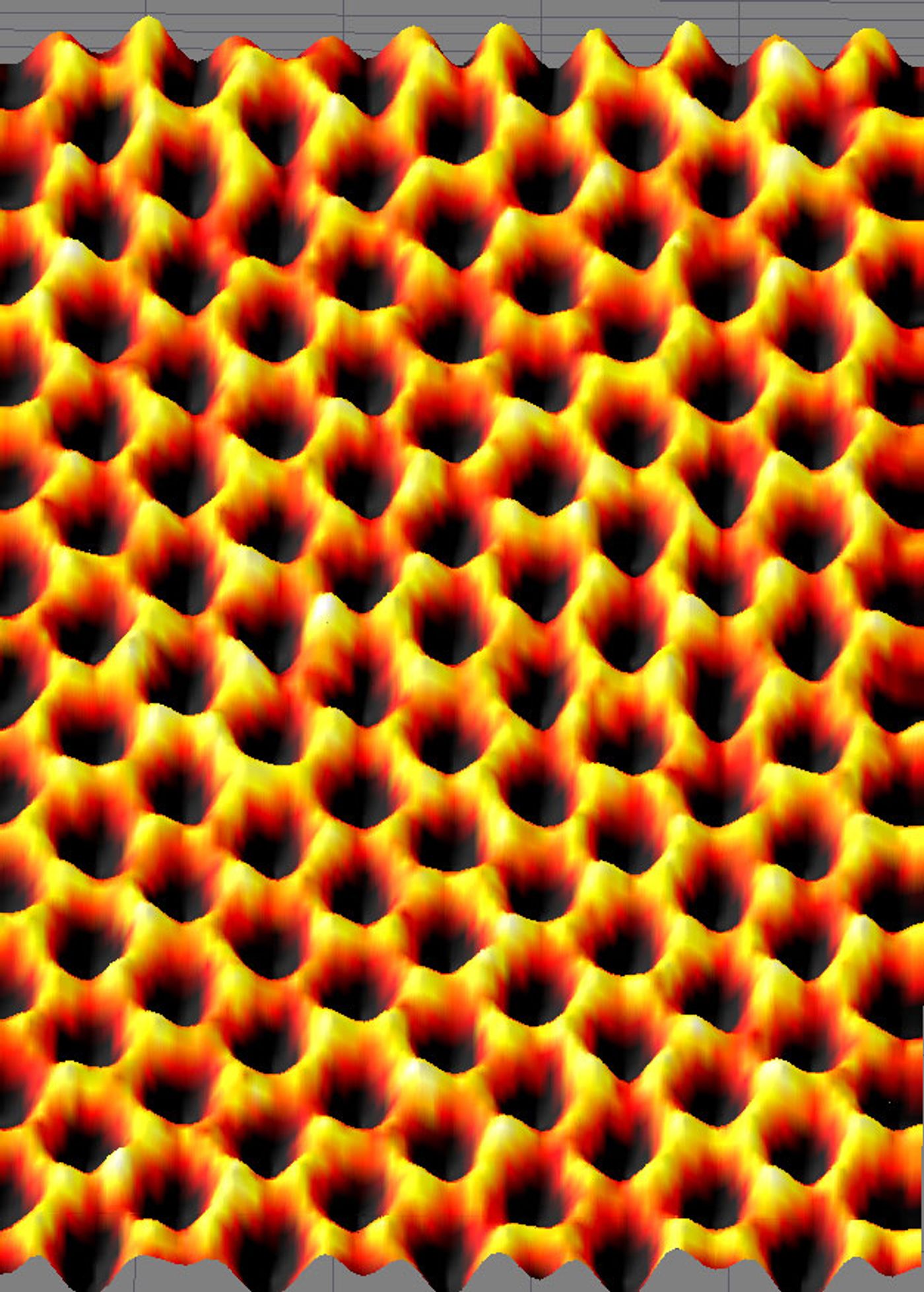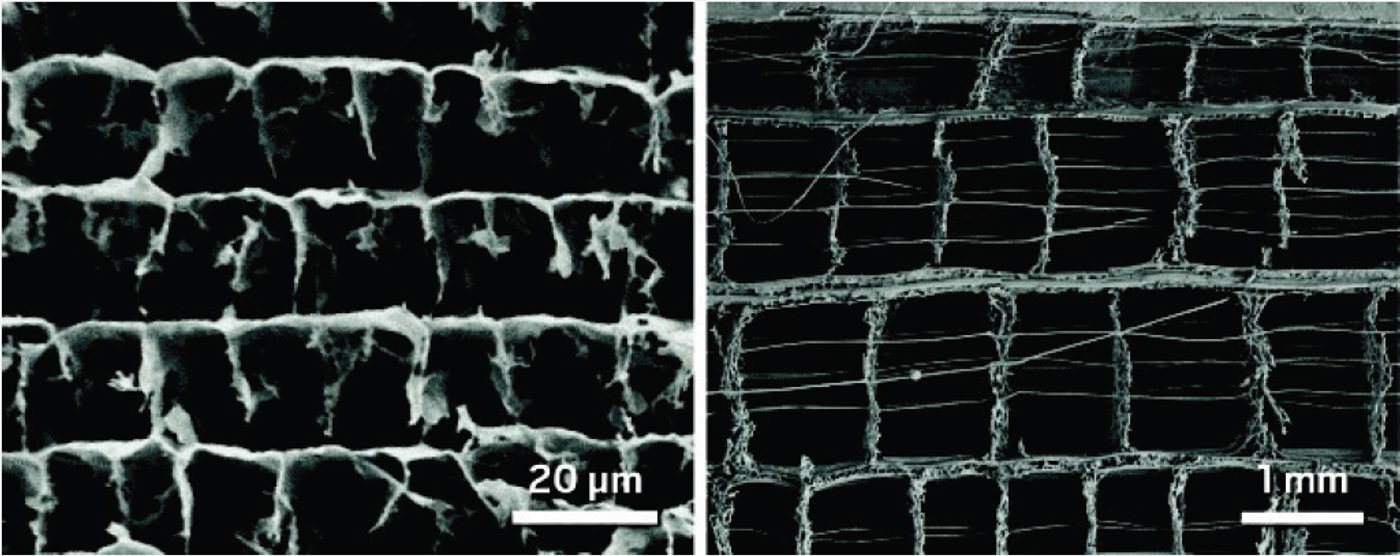This Spongy Graphene Aerogel Can Be In Your Future Wearable Electronics
The year was 2010, when graphene, a term that was only known to the scientific community, became a household word. Thanks to Nobel Laureates Andre Geim and Konstantin Novoselov, the world has become aware of this extraordinary material. At its core, graphene is a sheet of carbon atoms organized in the form of a hexagonal lattice. It is the basic structural unit that makes up graphite, charcoal, carbon nanotubes and buckyballs (C60). Graphene has many unusual properties: it is a hundred times stronger than steel, capable of self-repair when exposed to other carbon-based molecules, and an efficient conductor of heat and electricity.
Graphene under a scanning probe microscope. Credit: Wikipedia
In the early years, the production of graphene involved the use of humble adhesive tape, which extracts a 2-dimensional layer out of graphite. Nowadays, scientists make graphene with a variety of advanced techniques like sonication dispersing, diamond wedge slicing and hydrothermal self-assembly. The formation of graphene is no longer limited to the 2-dimensional sheet. Structures like bilayers, superlattices, nanoribbons, nanofibers, nanotubes, and nanocoils are generated to amplify and tweak the properties of this unusual material.
Inspired by Thalia dealbata, a water plant with sturdy and flexible stems, a team of Chinese researchers has come up with a novel design of graphene. What is so special about the plant is that its stem has massive fiber columns linked to each other with spring-like bridges. The researchers managed to replicate this porous structure in graphene. A delicately-controlled freezing method transformed a suspension of graphene oxide into parallel sheets connected by elastic bridges. Freeze-drying and warming of the sheets resulted in a cube-shaped graphene aerogel as the final product. The material is not only highly flexible but also reasonably conductive considering its low density, making it a good fit for wearable sensors and electronics.
Microscopic images of an elastic graphene aerogel (left) and Thalia dealbata's stem section (right). Credit: ACS Nano
Curious about the potential of their aerogel-producing technique, the researchers are now considering making aerogels out of other materials like cellulose and polymer-silica composites following a similar method. “With well-designed biomimetic structures, those materials could find many uses, such as in filtration, sensing, and liquid adsorption,” said Hao Bai, the chemical engineer who led the study.
Source: Chemical & Engineering News











